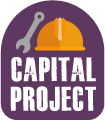Tax Rates
2022-23 School Tax Rates
At its monthly business meeting on August 17, 2023, the Board of Education adopted the following tax rates in conjunction with a tax levy of $11,764,8410 for the 2023-24 school year:
- City of Gloversville $19.36652
- City of Johnstown $19.71253
- Town of Ephratah $26.34426
- Town of Johnstown $29.13182
- Town of Palatine $35.62506
*Tax Levy: The total sum to be raised by the school district after subtracting out all other revenues including state aid. The tax levy is used to determine the tax rate for property owners in each of the cities, towns or villages that makes up a school district.
**Tax Rate: The amount of tax paid for each $1,000 of assessed value of property. In districts that cover just one municipality, the tax rate is figured simply by dividing the total assessed property value by 1,000 and then dividing that again into the tax levy (the amount of money to be raised locally). In districts that encompass more than on municipality, the formula for figuring the tax rate is more complicated. It involves assigning a share of the total tax levy to each municipality and applying equalization rates to take into account different assessment practices.
Equalization Rate: In simple terms, an equalization rate represents the average level of assessment in each community. For example, an equalization rate of 80 means that, on average, the property in a community is being assessed at 80% of its market value. The words “on average” are stressed to emphasize that that an equalization rate of 80 does not mean that each and every property is assessed at 80% of full value. Some may be assessed at lower than 80%, while others may be assessed at higher than 80%.
Equalization rates are established by the New York State Board of Equalization and Assessment. School districts that comprise more than one city, town or village must use the equalization rate to determine the tax rates for each municipality. The purpose is to bring some semblance of equity to how the taxes are distributed in any one school district, so that ideally a home with a full market value of $100,000 in one community will pay the same taxes as a home with a market value of $100,000 in the next community, regardless of how those two homes are assessed.



